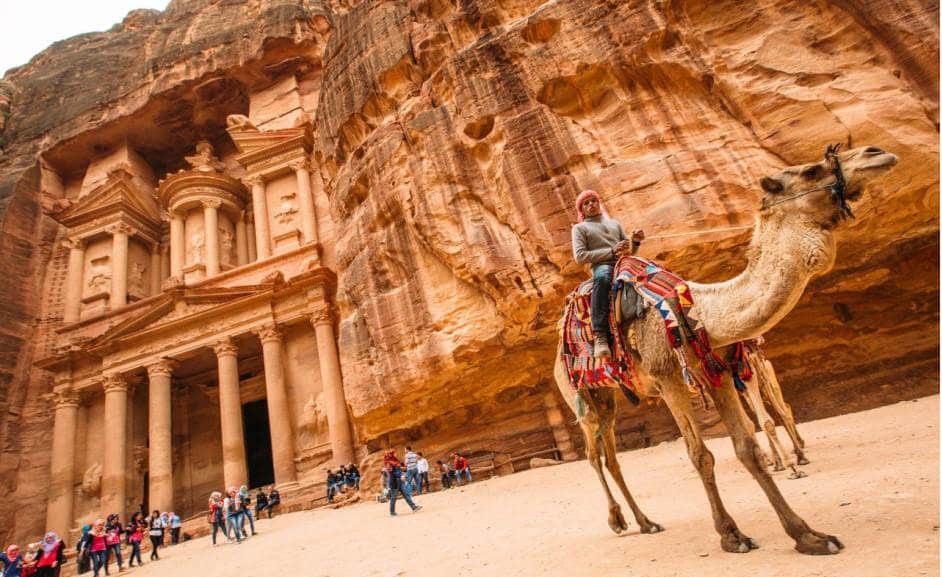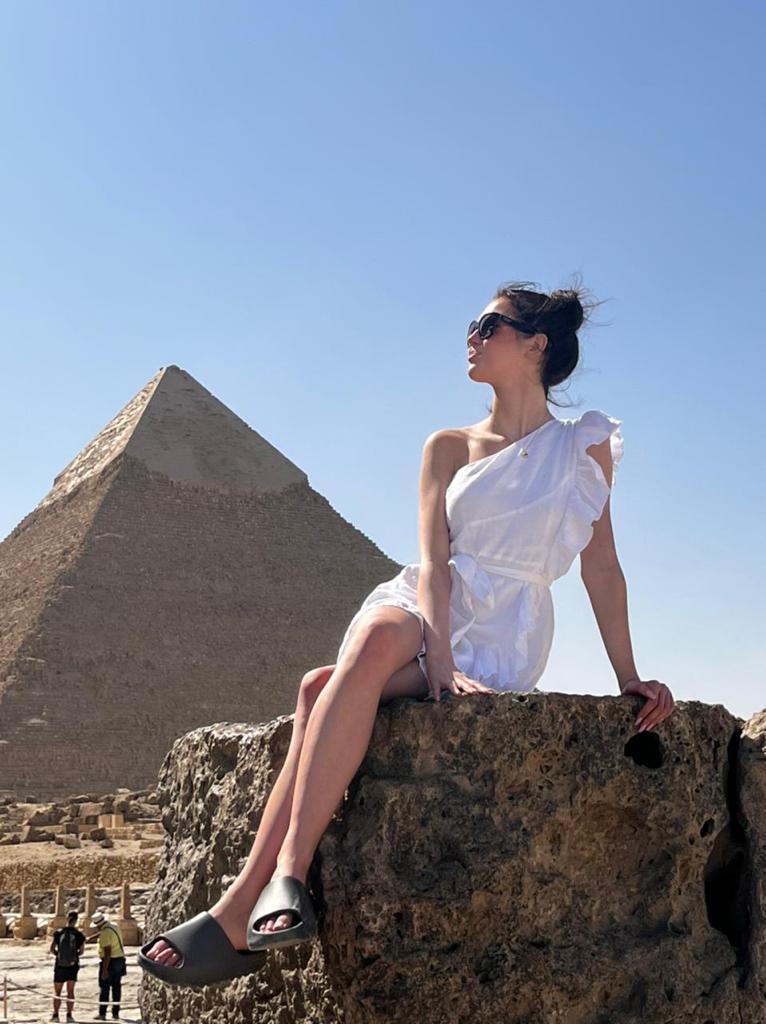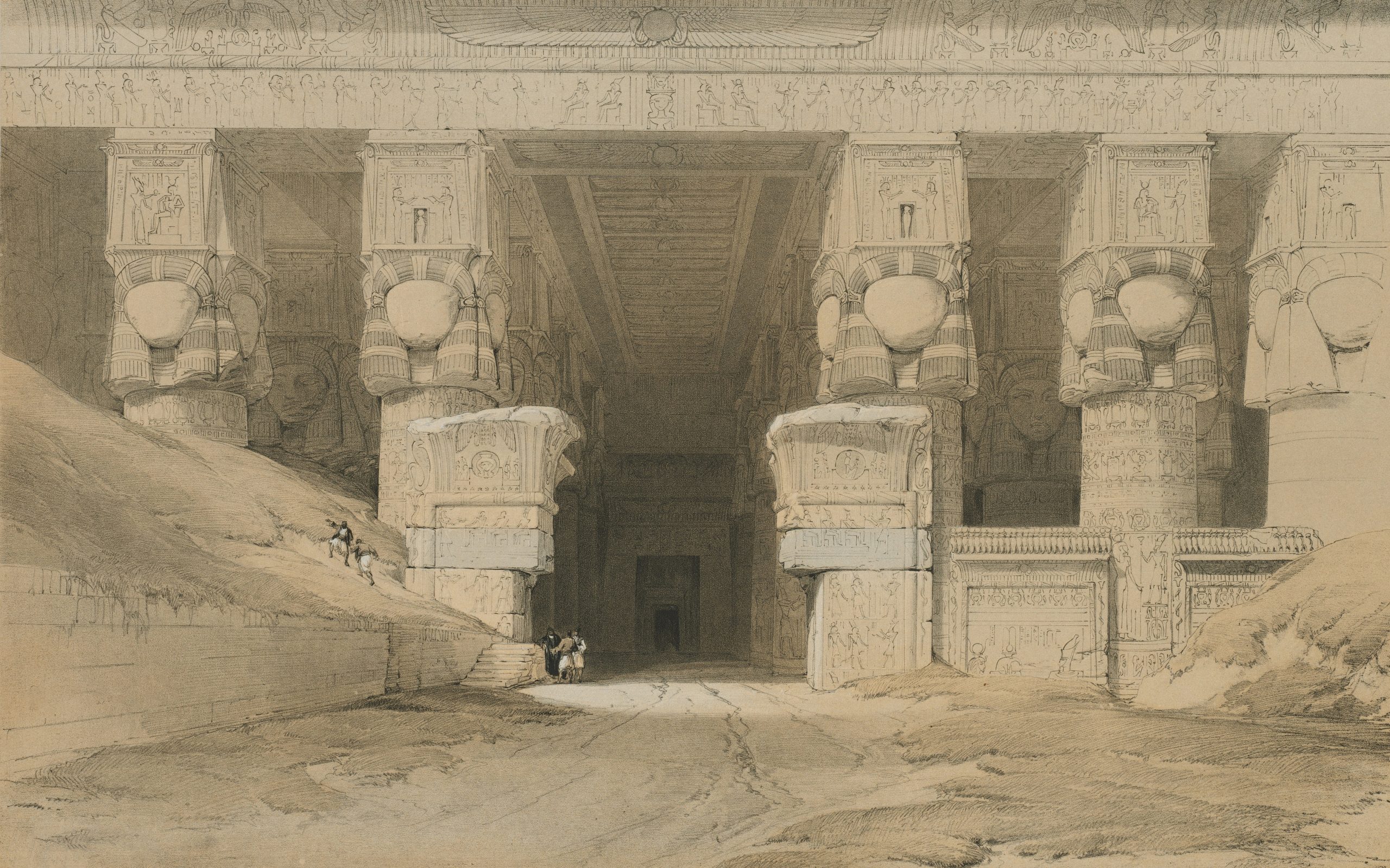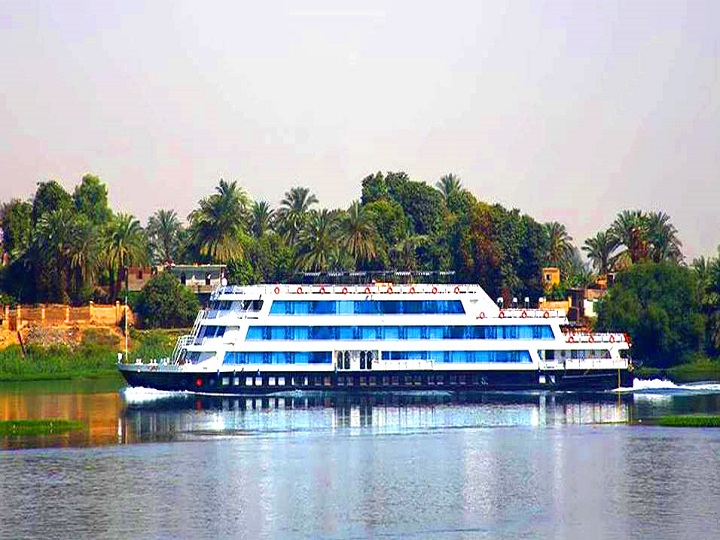This website uses cookies so that we can provide you with the best user experience possible. Cookie information is stored in your browser and performs functions such as recognising you when you return to our website and helping our team to understand which sections of the website you find most interesting and useful.

By Hesham Elgammal on 22 Mar 2025
Embark on a captivating journey through history as we delve into the timeless legends of Egypt and Jordan tours. From the iconic pyramids of Giza to the majestic city of Petra, these ancient wonders continue to mesmerize and inspire visitors from around the globe.
This article unveils the secrets of the past and takes you on an adventure of discovery, showcasing the rich cultural heritage and architectural marvels of these two captivating countries. Immerse yourself in the mystique of Egyptian civilization as you explore the magnificent temples of Luxor and Karnak or sail along the Nile in a traditional felucca boat or a Luxury Nile Cruise Ship.
Transitioning to Jordan, where ancient stories come to life, prepare to be awestruck by the rose-red city of Petra, carved into the rock cliffs by the Nabateans over 2,000 years ago. Allow your imagination to wander and envision a bygone era.
Join us on a fascinating voyage that transcends time and space, revealing the awe-inspiring beauty and incredible stories of Egypt and Jordan.
The Pyramids of Giza: A Testament to Engineering and Ancient Civilization
The Pyramids of Giza stand as monumental testaments to the ingenuity and engineering prowess of ancient Egypt. Constructed around 2580–2560 BC during the Fourth Dynasty, the Great Pyramid of Khufu, also known as Cheops, is the largest trio and one of the Seven Wonders of the Ancient World. Covering an area of approximately 13 acres, it was originally 146.6 meters tall, making it the tallest man-made structure for over 3,800 years. The sheer scale of this architectural marvel is a reflection of the sophistication and abilities of the civilization that created it, employing thousands of skilled workers, architects, and laborers.
Beneath the surface, the construction of these pyramids reveals a complex network of chambers and passageways, designed to protect the pharaoh’s body and treasures for the afterlife. The precision with which these stones were cut and assembled is nothing short of astounding, with some blocks weighing as much as 2.5 tons. Recent discoveries suggest advanced techniques were employed, including the use of levers and ramps, challenging the long-held belief that these colossal structures were built solely by slave labor. The organization, planning, and execution behind the construction of the pyramids reflect a highly developed society with a deep understanding of mathematics and engineering.
As you stand before these ancient giants, it’s impossible not to feel a sense of awe and wonder. The Pyramids of Giza not only symbolize the might and wealth of the Pharaohs but also encapsulate the spiritual beliefs and cultural values of ancient Egyptian civilization. They are not merely tombs; they represent a bridge between the earthly realm and the divine, a journey that signifies the eternal quest for immortality. The experience of visiting the pyramids invites you to ponder the mysteries of the past while marveling at the extraordinary achievements of humanity.

The Great Sphinx: Unraveling the Mysteries of This Majestic Monument
Guarding the Pyramids of Giza, the Great Sphinx is one of the most iconic symbols of ancient Egypt. This colossal limestone statue, with the body of a lion and the head of a pharaoh, stands at 20 meters high and stretches 73 meters long. Traditionally believed to represent Pharaoh Khafre, the Sphinx is enveloped in mystery, with its origins and purpose still debated among historians and archaeologists. Created around 2500 BC, the Sphinx was carved from a single mass of limestone, showcasing the incredible artistry and craftsmanship of ancient builders.
Despite its grandeur, the Sphinx has faced significant erosion over the centuries, leading to various restoration efforts. The monument’s enigmatic expression and the loss of the original nose have fueled countless theories and myths regarding its significance. Some scholars believe that the Sphinx was constructed as a guardian of the Giza Plateau, while others argue that it served a more religious purpose, symbolizing strength and wisdom in the face of the unknown. The mysteries surrounding this magnificent statue continue to capture the imagination of visitors and researchers alike, inviting endless exploration into its past.
Visiting the Sphinx allows one to reflect on the cultural and historical significance of this monumental figure. As you stand in its shadow, the connection to the ancient world becomes palpable, and you can almost hear the whispers of the past echoing through the sands of time. The Great Sphinx serves as a reminder of the enduring legacy of ancient Egypt, a civilization that has fascinated humanity for millennia. Its presence at Giza is not just a visual spectacle but a profound testament to the mysteries of life, death, and the divine.
Luxor: Exploring the Valley of the Kings and the Temple of Karnak
Luxor, often referred to as the “world’s greatest open-air museum,” is a city that embodies the grandeur of ancient Egyptian civilization. The Valley of the Kings, located on the west bank of the Nile, served as the final resting place for many pharaohs of the New Kingdom, including the famous Tutankhamun. This burial ground features over 60 tombs, each adorned with intricate hieroglyphs and stunning wall paintings that depict the journey to the afterlife. The artistry and craftsmanship found within these tombs are breathtaking, offering a glimpse into the rich spiritual beliefs of the ancient Egyptians.
The Temple of Karnak, another marvel of Luxor, is a vast complex dedicated to the sun god Amun-Ra. It is one of the largest religious buildings in the world, spanning over 200 acres. The sheer scale and grandeur of Karnak are awe-inspiring, with its massive columns, towering obelisks, and beautifully preserved hieroglyphs. Walking through the Great Hypostyle Hall, where 134 colossal columns stand in impressive rows, one cannot help but feel a sense of reverence for the ancient architects who designed such an extraordinary place of worship.
Exploring Luxor is not just a journey through history; it is an immersive experience that connects visitors with the rich tapestry of ancient Egyptian life. The vibrant colors and detailed inscriptions found within the tombs and temples tell stories of gods, pharaohs, and the afterlife, inviting you to ponder the beliefs and values that shaped this remarkable civilization. As the sun sets over the Nile, casting a golden hue on these ancient wonders, you can almost hear the echoes of a bygone era, reminding you of the enduring legacy of the pharaohs and their quest for immortality.
Petra: Discovering the Rose City Carved into the Cliffs of Jordan
Petra, the jewel of Jordan, is a breathtaking archaeological site that captures the imagination of all who visit. Carved into the rose-red cliffs by the Nabateans over 2,000 years ago, this ancient city was once a thriving trading hub connecting the East and West. As you approach Petra through the narrow siq, a winding canyon flanked by towering rock walls, anticipation builds. The moment you emerge into the open space and catch your first glimpse of the Treasury, or Al Khazneh, is nothing short of magical. This stunning façade, intricately carved from sandstone, stands as a testament to the artistry and architectural sophistication of its creators.
Beyond the Treasury, Petra unfolds in a series of remarkable structures and tombs, each reflecting the Nabateans’ unique blend of Eastern and Western influences. The Royal Tombs, carved into the mountainside, showcase intricate facades and elaborate interiors, while the Monastery, or Ad Deir, perched high above the valley, offers sweeping views of the surrounding landscape. The ingenuity of the Nabateans is evident in their advanced water management systems, which allowed them to thrive in this arid environment, demonstrating their adaptability and resilience.
Exploring Petra is an immersive experience that transports you back in time, allowing you to envision the bustling life that once filled its streets. The stories etched into the stone speak of trade, culture, and spirituality, inviting reflection on the lives of those who inhabited this remarkable city. As you wander through its ancient pathways, the rose-red cliffs stand as silent witnesses to the passage of time, reminding you that the legacy of Petra, much like the legends of Egypt, continues to inspire awe and wonder in the hearts of travelers from around the globe.

The Dead Sea: Experiencing the Unique Buoyancy and Therapeutic Properties
The Dead Sea, located at the lowest point on Earth, is a natural wonder that offers a unique experience unlike any other. Straddling the border between Jordan and Israel, this saline body of water is renowned for its high salt concentration, which allows swimmers to float effortlessly on its surface. The mineral-rich waters, coupled with the therapeutic mud found along its shores, have been sought after for centuries for their purported health benefits. Bathing in the Dead Sea is not just a leisure activity; it is an indulgent escape into a world of relaxation and rejuvenation.
As you immerse yourself in the buoyant waters, the soothing properties of the minerals are immediately apparent. The high levels of magnesium, potassium, and calcium are believed to promote skin health and alleviate various ailments. Many visitors take advantage of the natural mud, slathering it on their skin for a spa-like treatment that leaves them feeling refreshed and revitalized. The experience is not only enjoyable but also deeply therapeutic, attracting wellness seekers from all corners of the globe.
Surrounding the Dead Sea, the stark beauty of the landscape enhances the experience. The dramatic cliffs and barren desert create a stunning backdrop, highlighting the contrast between the shimmering waters and the arid environment. As you gaze out over the horizon, it becomes clear why this place has captured the hearts of so many throughout history. The Dead Sea is more than just a destination; it is a sanctuary where nature’s wonders come together to create a truly unforgettable experience, inviting you to embrace the tranquil beauty of one of the world’s most unique locations.
Wadi Rum: Immersing in the Breathtaking Desert Landscapes of Jordan
Wadi Rum, often referred to as the “Valley of the Moon,” is a breathtaking desert landscape that enchants visitors with its dramatic rock formations and sweeping vistas. Nestled in southern Jordan, this UNESCO World Heritage site has been inhabited by various civilizations for thousands of years, leaving behind a rich tapestry of cultural heritage. As you explore the vast expanse of Wadi Rum, the towering sandstone cliffs and expansive stretches of red sand evoke a sense of wonder and adventure. The stark beauty of this desert has captured the imagination of filmmakers and explorers alike, serving as the backdrop for numerous iconic movies.
One of the highlights of a visit to Wadi Rum is the opportunity to experience its unique ecosystems and diverse wildlife. The desert is home to a variety of flora and fauna, including rare species of plants and animals that have adapted to the harsh environment. Guided tours offer a chance to explore the area on foot, by jeep, or even on camelback, allowing you to immerse yourself in the beauty and tranquility of the desert landscape. The silence and vastness of Wadi Rum create a profound sense of peace, inviting reflection and connection with nature.
As the sun sets over the horizon, the desert transforms into a canvas of colors, casting brilliant hues of orange and pink across the sky. Camping under the stars in a traditional Bedouin tent provides an authentic experience, allowing you to witness the celestial beauty of the night sky. The stories and traditions of the Bedouin people add another layer of richness to your journey, offering insights into a way of life that has remained largely unchanged for centuries. Wadi Rum is not just a destination; it is an immersive experience that connects you with the timeless beauty of nature and the enduring spirit of its people.
The Nile River: Cruising Through History and Culture
The Nile River, often referred to as the lifeblood of Egypt, is a magnificent waterway that has sustained civilization for thousands of years. Stretching over 6,650 kilometers, it is the longest river in the world and has played a central role in shaping the culture, economy, and spirituality of the region. A cruise along the Nile allows travelers to witness the breathtaking landscapes and historic sites that line its banks, from ancient temples to bustling villages, offering a unique perspective on the heart of Egyptian life.
As you glide along the tranquil waters, the iconic sights of Luxor and Aswan come into view, each steeped in history and rich in cultural significance. The temples of Karnak and Luxor, with their towering columns and intricate hieroglyphs, tell stories of pharaohs and gods, while the serene beauty of the Valley of the Kings invites contemplation of the afterlife and the treasures buried within. A stop at the Philae Temple, dedicated to the goddess Isis, showcases the architectural grandeur and spiritual significance of ancient Egyptian religion, allowing you to connect with the past profoundly.
Cruising the Nile is not merely a journey through time; it is an experience that immerses you in the vibrant culture of modern Egypt. Onboard entertainment, traditional music, and culinary delights provide a taste of the local lifestyle, while interactions with fellow travelers create lasting memories. As the sun sets over the river, casting golden reflections on the water, the magic of the Nile unfolds, reminding you of the enduring allure of this ancient civilization and its profound connection to the land.
Tips for Planning a Trip to Egypt and Jordan
Planning a trip to Egypt and Jordan requires careful consideration to ensure an enriching experience that captures the essence of these ancient wonders. First and foremost, determine the best time to visit. Spring (March to May) and autumn (September to November) are ideal seasons, offering pleasant temperatures and fewer tourists. Researching local customs and cultural etiquette is also essential, as respect for traditions will enhance your interactions with locals and deepen your understanding of the rich heritage.
Creating an itinerary that balances exploration and relaxation is crucial. Prioritize must-visit sites such as the Pyramids of Giza, Petra, and the Valley of the Kings, while allowing time for leisurely activities like cruising the Nile or enjoying the therapeutic benefits of the Dead Sea. Consider guided tours for in-depth insights into historical sites, ensuring you make the most of your time. Additionally, booking accommodations in advance, particularly in popular areas, will provide peace of mind and help secure your preferred lodging.
Lastly, packing wisely is key to a comfortable journey. Lightweight clothing that can be layered is advisable, along with comfortable walking shoes for exploring archaeological sites. Sunscreen, a hat, and reusable water bottles are essential for protection against the sun and staying hydrated. Familiarize yourself with local currency and consider having some cash on hand for markets and smaller establishments. By planning thoughtfully, you can create a memorable adventure that reveals the timeless legends of Egypt and Jordan tours.
Conclusion: The Enduring Allure of the Ancient Wonders
The ancient wonders of Egypt and Jordan continue to captivate the hearts and minds of travelers from around the world. From the majestic Pyramids of Giza and the enigmatic Great Sphinx to the breathtaking city of Petra and the serene waters of the Dead Sea, each site tells a unique story woven into the fabric of history. These remarkable monuments stand as enduring symbols of human creativity, resilience, and the quest for understanding our place in the universe.
As we explore these timeless legends, we are reminded of the profound impact that ancient civilizations have had on our modern world. The architectural marvels, artistic achievements, and spiritual beliefs of the Egyptians and Nabateans offer invaluable insights into the complexity of human culture and the enduring quest for meaning. Each visit to these sites is not merely a journey through time; it is an invitation to connect with the past and reflect on the legacies that continue to shape our lives today.
Ultimately, the allure of Egypt and Jordan lies in their ability to inspire wonder and curiosity. As you walk through the corridors of history, witness the breathtaking landscapes, and engage with the rich tapestry of culture, you will discover that the stories of these ancient civilizations are far from over. They live on in the hearts of those who seek to understand their beauty, wisdom, and the timeless lessons they impart. Embrace the journey, and let the ancient wonders guide you through a world that transcends time and space.
This article was updated and re-written in part by Hesham El Gammal; on March 22nd, 2025 + fact-checked.
Categories
- Egypt and Jordan Tours (12)
- Egypt Destinations (26)
- Egypt Nile Cruises (40)
- Egypt Sightseeing (14)
- Egypt Tour Packages (17)
- infographics (1)
-

Nile Cruisers Reviews
25 Mar 2025
-

Why Choose Nile Cruisers to Book Your Egypt Nile Cruise?
12 Dec 2025
-

Celebrate Christmas in Egypt: Best Egypt Travel Tour Packages for Year-End Getaways
12 Dec 2025
-

Make Your Year-End Special: Festive Egypt Tour Packages for Winter Travel
12 Dec 2025
-

The Lake Nasser Luxury Cruise Ships
09 Dec 2025
-

Sacred Egypt – Spiritual Tours
07 Dec 2025
-

Nile Cruise from Cairo to Aswan
06 Dec 2025
-

Nile Cruisers Reviews
25 Mar 2025
-

Why Choose Nile Cruisers to Book Your Egypt Nile Cruise?
12 Dec 2025
-

Celebrate Christmas in Egypt: Best Egypt Travel Tour Packages for Year-End Getaways
12 Dec 2025
-

Make Your Year-End Special: Festive Egypt Tour Packages for Winter Travel
12 Dec 2025
-

The Lake Nasser Luxury Cruise Ships
09 Dec 2025












Comments